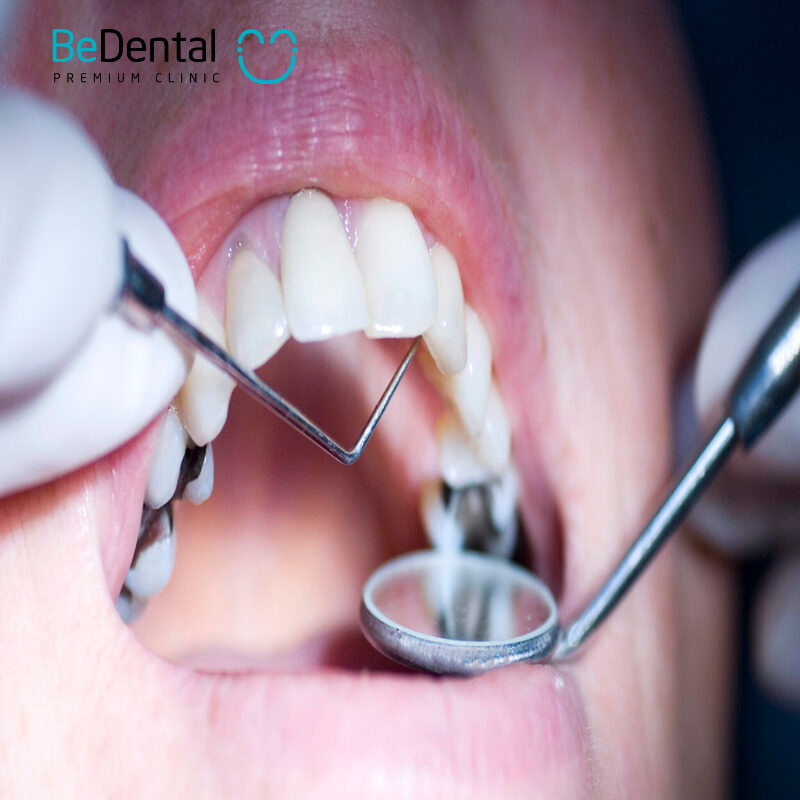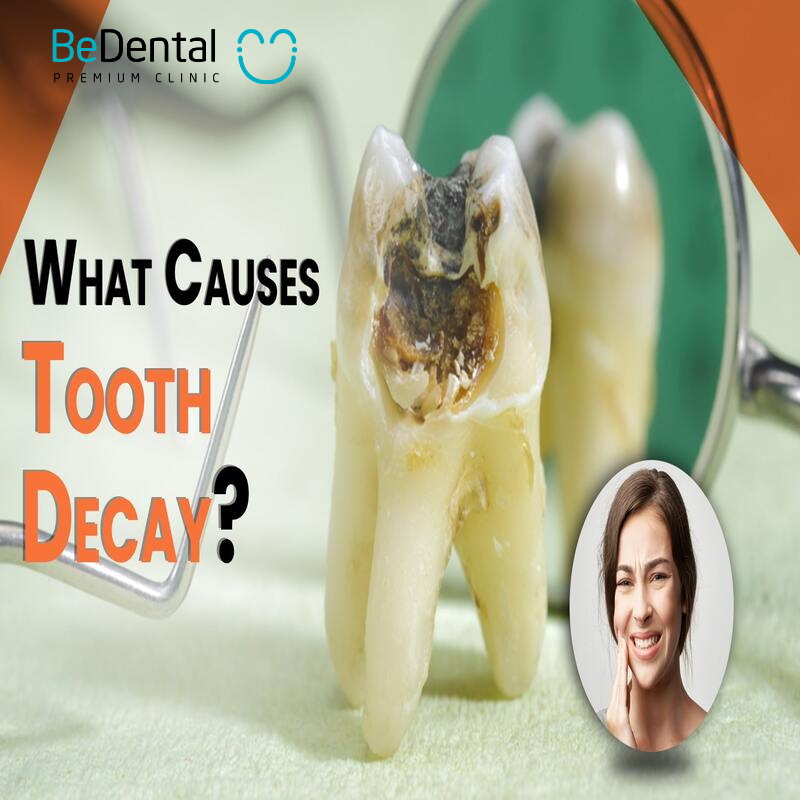Tooth decay is one of the most common oral health problems worldwide, affecting approximately 2.3 billion adults and 560 million children. According to the World Health Organization (WHO), tooth decay not only causes discomfort but can also lead to more serious issues such as pulpitis, infections, and tooth loss. To address this condition, various tooth decay treatment methods and techniques have been developed, ranging from non-invasive to invasive approaches.
In this article, we will explore the available treatments for tooth decay, including non-invasive methods like fluoride and non-invasive sealants, as well as invasive techniques such as dental fillings, crowns, and implants.
The Importance of Timely Tooth Decay Treatment
Timely tooth decay treatment plays a crucial role in protecting both oral and overall health. Here are some key reasons why this treatment is important:
- Preventing Serious Complications: When tooth decay is not treated promptly, bacteria can spread into the tooth pulp, causing pulpitis, infections, or even leading to tooth loss. Early treatment helps eliminate pathogens and prevent severe complications such as gum disease or dental abscesses.

- Preserving Tooth Structure: Early intervention helps preserve as much natural tooth tissue as possible. When decay is detected and treated in its early stages, dentists can remove the decayed portion and fill it, maintaining the tooth’s structure and function without requiring more complex procedures like crowns or implants.
- Reducing Pain and Discomfort: Tooth decay often causes pain and discomfort, impacting quality of life. Timely treatment not only alleviates pain but also provides comfort to patients, allowing them to return to their normal daily activities.
- Cost-Effectiveness: Treating tooth decay early is generally less expensive than addressing serious complications. If decay progresses, patients may need to pay for more complex treatments, such as root canals or implants, increasing their financial burden.
- Protecting Overall Health: Oral health is closely linked to overall health. Infections from tooth decay can lead to other serious health issues, such as cardiovascular disease and diabetes. Therefore, timely treatment of tooth decay not only protects dental health but also contributes to overall well-being.
Causes of Tooth Decay
Several fundamental causes contribute to tooth decay, including dietary habits, poor oral hygiene, plaque accumulation, and other factors.
- Sugary Foods and Drinks: Foods and beverages high in sugar, such as candies, sodas, pastries, and dried fruits, are among the leading causes of tooth decay. When sugar in food comes into contact with bacteria in the mouth, it produces acid that attacks tooth enamel, leading to decay. Excessive sugar consumption without proper oral hygiene increases the risk of cavities.
- Poor Oral Hygiene: Poor oral hygiene is a significant cause of tooth decay. Failing to brush regularly or correctly leads to the accumulation of plaque and bacteria on tooth surfaces. If plaque is not removed, it hardens into tartar, creating an environment conducive to bacterial growth and decay.
- Plaque Formation and Bacteria (wikipedia): Plaque is a soft film of bacteria that forms on teeth. If not removed through brushing and flossing, plaque hardens into tartar, making cleaning more challenging. Bacteria in plaque produce acid when they come into contact with sugar, leading to enamel damage and the formation of cavities.
- Other Risk Factors: In addition to the main causes mentioned above, several other risk factors can contribute to the development of tooth decay, including:
- Genetics: Some individuals may be more prone to tooth decay due to inherited tooth structure or enamel quality.
- Medical Conditions: Conditions like diabetes can increase the risk of gum disease and tooth decay.
- Dietary Habits: An imbalanced diet lacking essential vitamins and minerals can also affect oral health.
Understanding the causes of tooth decay helps individuals become more aware of maintaining oral health and adopting effective preventive measures.

Several specific signs of tooth decay
Tooth decay is a common dental issue that can be identified through several specific signs. First, you may experience pain or sensitivity in the affected tooth, especially when eating, particularly with hot, cold, or sweet foods. Additionally, the appearance of brown or black spots on the surface of the tooth is a warning sign of developing cavities. As the condition progresses, you might find it difficult to chew or notice that the tooth becomes more sensitive. Another indication is bad breath, caused by the decomposition of food and bacteria accumulating in the mouth. If you notice any of these signs, it’s essential to visit a dentist for a timely check-up and treatment to avoid more serious complications.
Tooth Decay Treatment Methods
Here are the treatment options for tooth decay, divided into two main categories: non-invasive and invasive treatments.
Non-Invasive Treatments
- Fluoride (About Fluoride treatment): Fluoride is an effective method for preventing and treating early-stage tooth decay. It strengthens tooth enamel and helps restore mildly damaged areas caused by decay. Dentists can apply fluoride in the form of gels, mouth rinses, or topical products, helping to reduce the activity of cavity-causing bacteria.
- Non-Invasive Sealants: For small cavities, non-invasive sealants can be used to protect tooth enamel. These sealants are usually made from resin or other materials that create a protective layer on the tooth surface, preventing bacteria from entering and growing.
Invasive Treatments
Dental Fillings (Composite, Amalgam): When tooth decay has progressed and created a cavity, filling is necessary. The dentist will remove the decayed part of the tooth and fill it with materials such as composite (tooth-colored filling) or amalgam (metal alloy). This method restores the shape and function of the tooth.

Crowns: When tooth decay causes significant damage to the tooth structure, a crown may be a suitable option. This involves removing the damaged part of the tooth and creating a dental crown to cover the remaining portion, restoring both aesthetics and function.
Dental Implants (if necessary): In cases of tooth loss due to severe decay, dental implants may be performed. This method involves placing an implant post into the jawbone, followed by attaching a dental crown to restore chewing function and aesthetics.
New Techniques and Technologies in Tooth Decay Treatment
Here are some new techniques and technologies in the treatment of tooth decay:
- Laser Use in Tooth Decay Treatment: The use of lasers in dentistry has opened a new avenue for treating tooth decay. Laser technology allows dentists to remove damaged tooth tissue precisely without drilling, minimizing discomfort for patients. Lasers can also effectively kill bacteria, preventing the recurrence of tooth decay. Moreover, laser treatments are often quicker and result in less bleeding than traditional methods.
- 3D Technology in Diagnosis and Treatment: 3D printing technology is increasingly being used in dentistry, particularly for diagnosing and treating tooth decay. 3D imaging helps dentists gain a comprehensive view of a patient’s oral health, allowing for more accurate treatment planning. 3D printing technology also enables the production of custom dental trays and crowns with high precision, improving treatment efficacy and saving time for patients.
- Development of New Filling Materials: New filling materials are being researched and developed to enhance the effectiveness of tooth decay treatment. These materials not only restore tooth function but also ensure better aesthetics and durability compared to traditional materials. For example, filling compounds that contain fluoride help strengthen enamel and prevent recurrent decay. Additionally, research is underway to develop self-healing filling materials, promising significant advancements in tooth decay treatment.
Preventive Measures for Tooth Decay
Here are some methods for preventing tooth decay:
Oral Hygiene Habits: Proper oral hygiene is one of the most critical factors in preventing tooth decay. This includes:
- Brushing Correctly: Brush your teeth at least twice a day with fluoride toothpaste to remove plaque and bacteria from tooth surfaces.
- Flossing: Use dental floss at least once a day to clean between teeth where toothbrushes may not reach, preventing plaque buildup and decay.
- Rinsing with Salt Water or Mouthwash: Use fluoride mouthwash or saltwater to help clean the mouth and reduce bacteria.
Regular Dental Check-ups
Regular dental check-ups play a crucial role in preventing tooth decay. It’s recommended to:
- Visit the Dentist Every 6 Months: These routine visits allow dentists to detect oral health issues early, including cavities, and provide timely treatment before conditions worsen.
- Professional Cleaning: This procedure removes plaque and tartar buildup, helping to prevent gum disease and cavities.
- Use of Fluoride: Dentists can offer professional fluoride treatments that strengthen tooth enamel and help prevent decay.
BeDental offers a comprehensive range of top-tier dental treatment services in Vietnam
BeDental offers a comprehensive range of top-tier dental treatment services in Vietnam. From preventive care and cosmetic dentistry to advanced procedures like dental implants and orthodontics, the clinic is equipped to address all dental needs. Their team of skilled professionals is dedicated to delivering high-quality care using the latest technology and techniques. BeDental prioritizes patient comfort and satisfaction, making it a leading choice for those seeking exceptional dental services in Vietnam.
For those seeking further consultation regarding dental examination services, please visit BeDental’s locations in Hanoi or Ho Chi Minh City. You can also reach us at our hotline: (+84) 934.61.9090 / (+84) 899.555.636 or through our Facebook page, BeDental, for prompt and accurate assistance.
.




